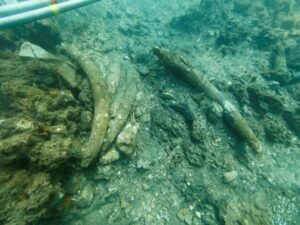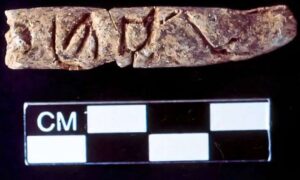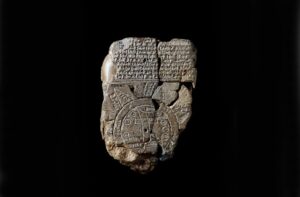For 10 years, archaeologists have been searching for Scotland’s lost Monastery of Deer. They finally found it 80 meters from the ruins of Deer Abbey, in Aberdeenshire.

Aerial view of the monastery site in front of the remains of Deer Abbey. Photo: Midas Media
The Abbey itself dates back to the 13th century. But around the ruins, archaeologists found rubble from an earlier time. This set them on the path to the long-lost monastery.
The discovery is not only important archaeologically. The monastery is central to the Scots Gaelic language. It has long been thought that the earliest written Scots Gaelic came from the monastery, in the Book of Deer.
The Book of Deer is a Latin pocket gospel that dates between 850 AD and 1000 AD. Despite its modest size, it is one of the most important pieces of writing in the history of the ancient Celtic language. Throughout the book, monks added Gaelic addenda in the margins about land grants and the formation of the monastery in the 11th and early 12th centuries. This mention of the monastery led to the quest for its location. No one knew where it had once stood.

The Book of Deer at Cambridge University Library. Photo: Midas Media
The Book of Deer
The Book of Deer itself was written in the 10th century, much earlier than the marginalia. The book is currently in the Cambridge University Library.
“Not only does this show that Gaelic was spoken in the region [of Aberdeenshire],” says archaeologist Mairead Morgan, “but it is also the earliest evidence that exists of written Scottish Gaelic by a good 200 to 300 years.”
A team of researchers, students, and volunteers carried out the excavation in 2022. First, they created large trenches to search for medieval materials. Then they excavated layers of stone and demolition material. Eventually, they reached the earliest layers and post holes used to hold stone or timber. The position of the post holes suggests that the building was circular.

Ancient hnefatafl board game found at the newly identified site of the Monastery of Deer. Photo: Michael Sharpe
Carbon dating showed that charcoal from the post holes is from the same time period in which the addenda were added to the Book of Deer. Researchers also uncovered pottery, fragments of glassware, writing tools, and hnefatafl boards (Viking chessboards).






